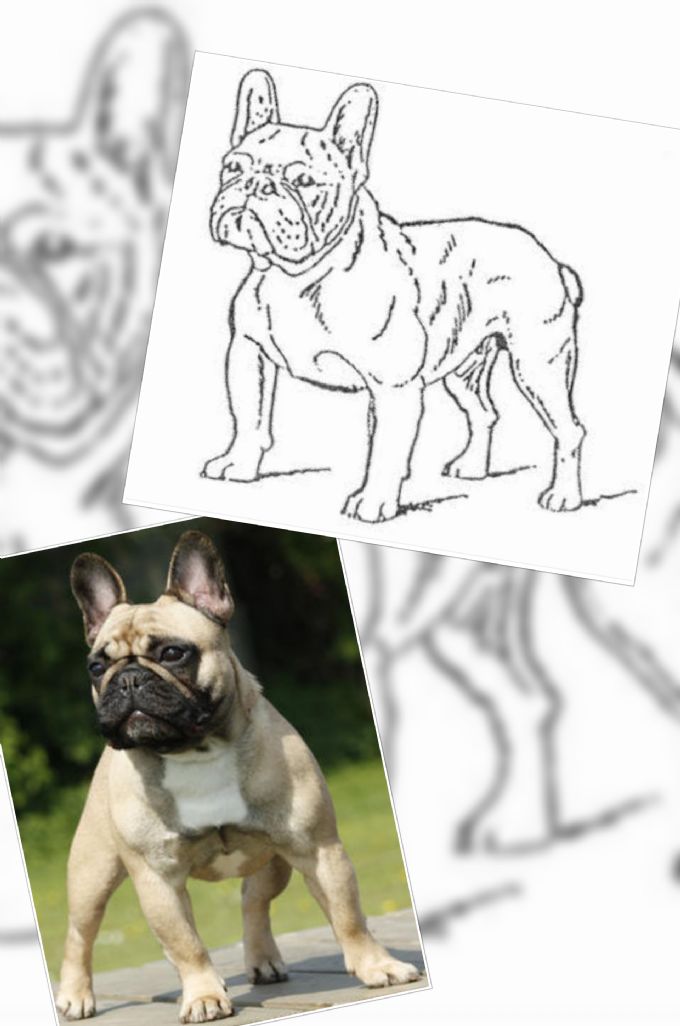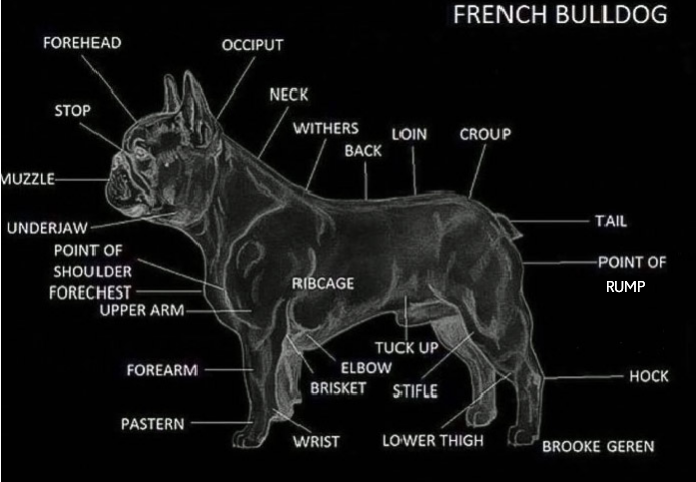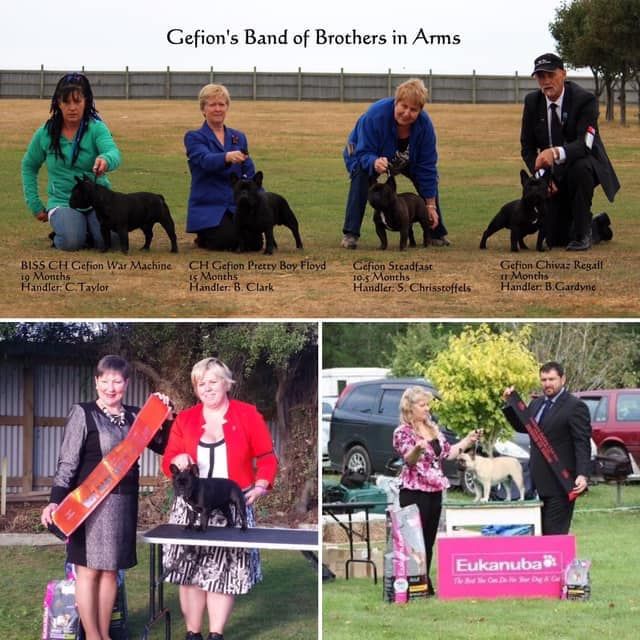Our Breeds: French Bulldog
Sub-links for this page


Built like a small tank, the French bulldog is a mid-sized member of the non-sporting group. The dog shares the non-sporting group with the Boston terrier and the bulldog, two breeds for which the French bulldog is most often mistaken.
The French bulldog is not simply a miniature bulldog. The most notable characteristic is the "bat" ear, which occurs naturally and is never cropped or altered. Also unique to the breed is the skull, which is flat between the ears. The French bulldog is a compact, muscular dog with a flat, short coat. Colours common to the breed include fawn, pied and varieties of brindle. The male and female dog weight is 11-14 kgs.
While there are now some colours such as blue, merle, black and tan etc appearing, these are not exotic as some people would have you believe. These coloured dogs are not in fact recognised colours and can also come with some serious health problems, which are terrible for the dog to say nothing of the heartache and cost it could cause the owner.
There is also a very interesting article about so called rare colours on the following website. http://www.dogster.com/lifestyle/why-you-dont-want-a-purebred-dog-in-a-rare-color
BUYER BEWARE – a lot of money is being paid for these dogs that cannot be registered with the Kennel Club as they are not a recognised colour.
PERSONALITY:
The French bulldog is an even-tempered house dog that loves attention, a playful clown. This dog is ideal for a single-person household, or as a member of a family. They love children and other animals the more attention they get the better they like it. The French bulldog does not bark a lot, only when he finds real cause for excitement.
LIVING WITH:
A French bulldog is able to be happy in any housing. This breed is suitable for city life, because no large yard is required. He is not meant to be a jogging companion, but he is always willing to go for a brisk walk. The French bulldog does not require a lot of food, and his short coat is easy to keep clean. Facial wrinkles should be cleaned regularly. The Frenchie snorts and snores and farts, but somehow it' is part of his appeal. He prefers to be close to you and can be like a shadow.
HISTORY:
In the early 1800s, Normandy lace workers from England set off to find work in France. They took with them smaller bulldogs to be kept on the farms as companions and to chase away the rats. In these northern French farming communities, the popularity of this hardy dog grew quickly. In fact, established bulldog breeders in England were happy to perpetuate this "new" breed by selling their undersized dogs to the French.
Some reports say the French bulldog was developed in Paris as a fighting dog. However, the dog is more widely known as a very fashionable household companion kept by upper class and royalty. One French bulldog, insured for an incredible sum (at that time) of $750, travelled aboard the Titanic. In the late 1800s and early 1900s the French bulldog was considered a dog of high society; the breed still attracts people who appreciate the finer things in life.
in conclusion:-
Please do your homework. Visit shows, talk to breeders and owners of Frenchies before you make your final decision. Who doesn’t love a puppy, but you will hopefully have them for a long time and so it is important to do everything you can to make sure your new family member has come from a breeder who is reputable and doing their best to promote the best possible health of their french bulldogs.
CONTACTS:-
Auckland Bulldog Club:- [email protected]
French Bulldog Society:- [email protected]
Central Bulldog Club – [email protected]
Wellington Bulldog Club:- [email protected]
Southern Bulldog Club:- [email protected]
Combined Bulldog Club Taskforce: - [email protected]

